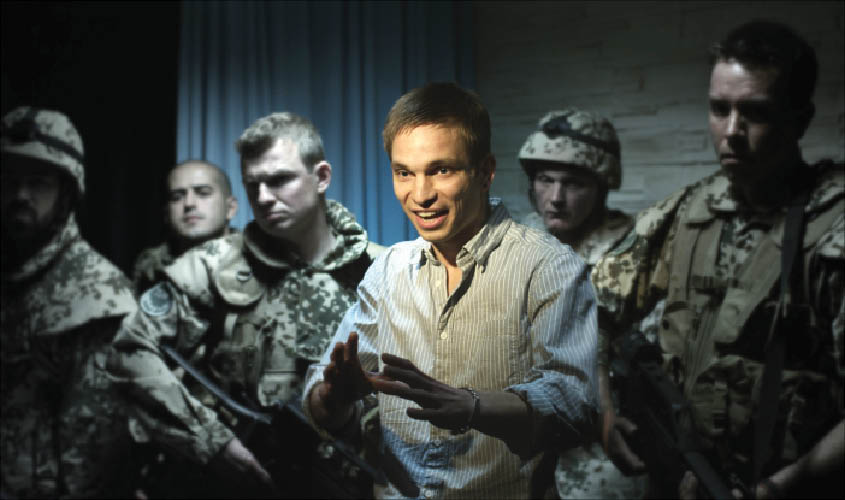The photographs, paintings and installation pieces displayed at Days Without a Night, an ongoing show in Delhi, are centred around the theme of personal and historical trauma, and were created by an international ensemble of artists, writes Bhumika Popli.
Days Without a Night. This title, of an ongoing exhibition in Delhi, makes you think about certain countries where, for most of the year, night doesn’t fall and it stays light round the clock. But this phrase also refers to people haunted by disturbing memories of the past. This particular exhibition attempts to address personal traumas.
The show is on view at building number 13 at Barakhamba Road which reportedly functioned as an orphanage
For curators Kanika Kuthiala and Leonald Emmerling, the venue of the exhibition carries significance. In a joint statement over email, they said, “To have an exhibition that deals with memory, in a space that has several layers buried in its past—from being a home, to once housing orphaned children and then falling to disuse—it provides the perfect backdrop for the exhibition and the topic that we are engaging ourselves with. The exhibition venue becomes an object within the larger context of the exhibition. In this way, Arya Orphanage, as a historically charged space, produces a new narrative for space almost as an object itself.”
The topic of “Remembering and Forgetting” has been of great interest to these two curators this year, who have organised two events on the same theme previously as well. With this exhibition, they wanted to explore how armed conflicts and mass violence have shaped, to a great extent, the 20th century.

The curators said, “While, both the First and Second World Wars left the world in disarray and turmoil, the Holocaust called into question many existing ways of commemorating the past. In the recent past, many instances of communal violence that have gripped this country beg us to question what we remember and what we forget. At present, many societies are seriously affected by memories of war and violence, by the painful recollections that are passed on and kept alive for various reasons, often for many generations. Therefore, the question arises: is it better to remember or rather better to forget?”
The first exhibits you see here are photographs of ponds in idyllic landscapes. Images of leaves and twigs floating on the water, and the land filled with lush greenery. The view looks perfect for a picnic spot. In this gorgeous scene, you don’t see a trace of trauma. You think that maybe the curators have included these photos to give a poetic turn to the show, until you see the title. Entitled Bomb Ponds, the photographs are from Cambodia. And these beautiful ponds are actually water-filled craters made by American bombs, between 1964 and 1973. The photographs are by the Cambodia-born artist Vandy Rattana, who blurs the boundaries between documentary and art in his creative practice.

Another exhibit at the show is a video clipping shot by Thierry De Mey. It is called Fase, a dance recital from 1982 by choreographer Anne Teresa De Keersmaeker on a piece of music titled Come Out by Steve Reich. The original music was inspired by a 1964 murder incident in New York. There are 12 different sized television screens placed on a wall in a dark room at the venue. The dancers are seated on stools and are making sharp hand gestures, cutting through the air and probably eliminating the negative energy them.
In one of the rooms we see two official telephone directories of Berlin. The thick one is from the year 1941, printed during the Second World War and the thin one is from 1945, printed after the end of the war. The war had just cleared a number of people from the face of the earth and from the pages of the telephone directory.
But the disappearances cannot always be recorded if it is the self that has disappeared. Artist Gagan Singh, has included two videos in the show. Entitled, Go Through All the Boxes and Give Me My Tongue show the dilemmas he faces in his life owing to the rigid societal conventions and ultimately loses oneself to a different trauma.
According to his statement on Go Through All the Boxes, “The narrative is some sort of a chase that I find myself in. And I’m met with a feeling of disappointment in the end as I end up losing the individual.”
The show is on view at 13, Barakhamba Road, New Delhi till 16 December

